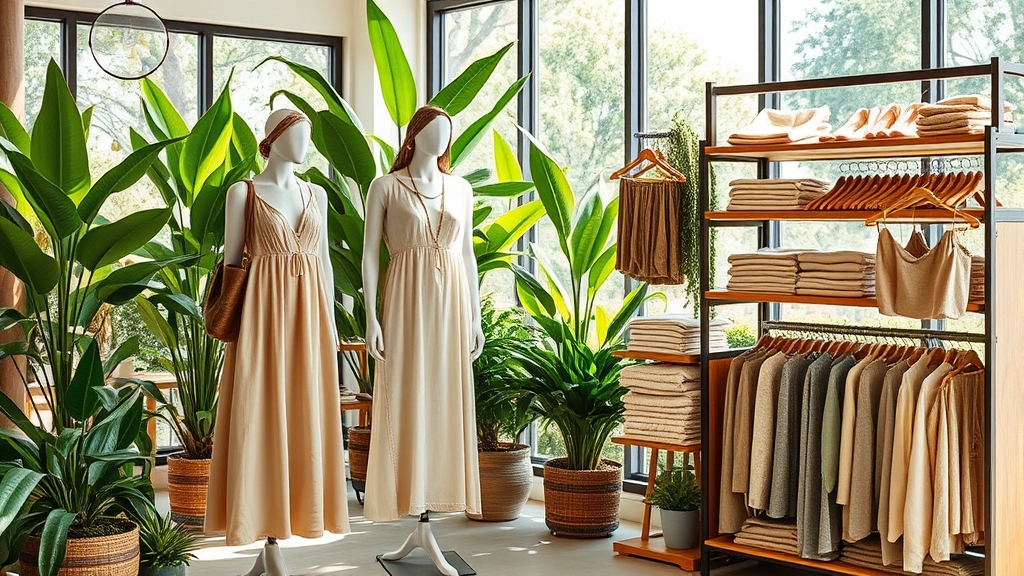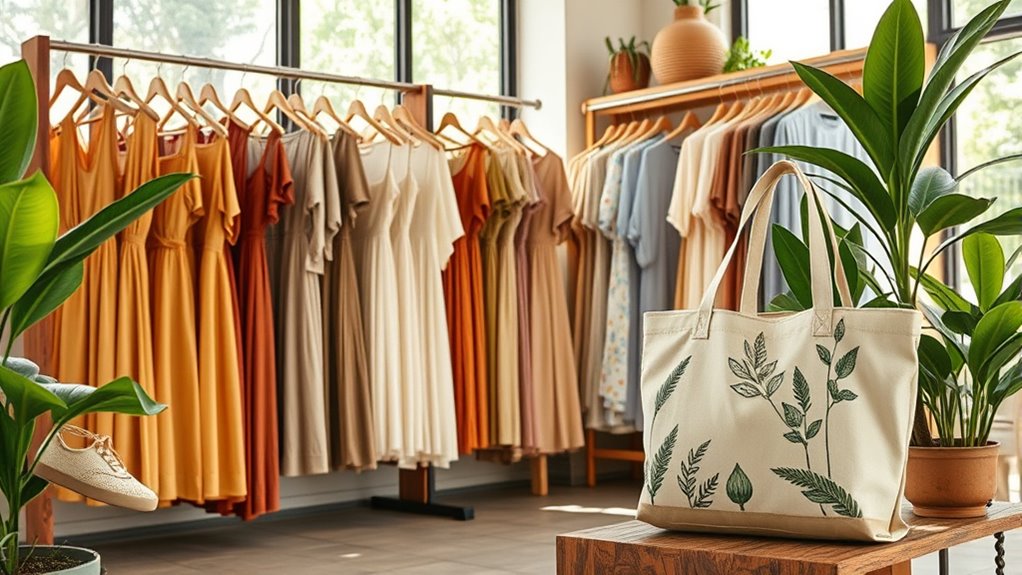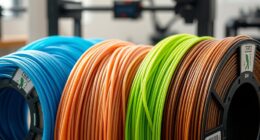To green your wardrobe, start by choosing eco-friendly fabrics like organic cotton, hemp, or recycled materials, which reduce environmental harm. Support brands committed to ethical manufacturing and fair labor practices by looking for certifications like Fair Trade or GOTS. Invest in quality pieces that last longer and care for them properly. You can also shop secondhand or swap clothes to cut waste. Keep discovering ways to make your fashion choices more sustainable and impact-positive.
Key Takeaways
- Choose clothing made from eco-friendly fabrics like organic cotton, hemp, linen, Tencel, or recycled materials.
- Support brands with ethical manufacturing practices and certifications such as Fair Trade or GOTS.
- Invest in high-quality pieces to ensure longevity and reduce the need for frequent replacements.
- Practice proper garment care to extend clothing lifespan and minimize waste.
- Opt for secondhand shopping, clothing swaps, or sustainable brands to lower environmental impact.

Sustainable fashion is transforming the way we think about clothing by emphasizing eco-friendly materials, ethical production, and mindful consumption. When you start considering how your wardrobe impacts the planet, you realize that choosing eco-friendly fabrics plays a vital role. These fabrics, made from organic cotton, hemp, linen, Tencel, or recycled materials, reduce environmental harm compared to conventional textiles. They’re grown or produced with less water, fewer chemicals, and lower emissions, making your clothing choices more sustainable. By opting for garments crafted from eco-friendly fabrics, you support a system that prioritizes environmental health and conservation, helping to minimize pollution and waste in the fashion industry.
Another key aspect of making your wardrobe greener is understanding ethical manufacturing. This means supporting brands that ensure fair labor practices, safe working conditions, and fair wages for workers. When you buy from companies committed to ethical manufacturing, you’re not just purchasing a product; you’re endorsing a transparent supply chain that respects human rights. It’s about more than just the final product—it’s about the story behind it. Look for certifications like Fair Trade or GOTS, which verify that the clothing was produced under ethical standards. Supporting companies with transparent supply chains can also help promote ethical labor practices across the industry. Incorporating sustainable materials into your wardrobe choices further reduces environmental impact and encourages innovation in eco-friendly textiles. Additionally, choosing brands that prioritize environmental certifications can help ensure your clothing is made with sustainable standards in mind. By choosing brands that prioritize ethical manufacturing, you actively reduce the demand for fast fashion, which often relies on exploitative labor practices and environmental degradation.
Additionally, being aware of low light pollution in certain areas can enhance your understanding of how sustainable practices extend beyond fashion to other environmental concerns. Transitioning to sustainable fashion also involves being a mindful consumer. This means thinking long-term about your clothing choices. Instead of buying cheap, disposable items, invest in quality pieces that last longer. When you’re aware of the importance of eco-friendly fabrics and ethical manufacturing, you’ll naturally gravitate toward items that align with these values. Proper care extends the life of your garments, further reducing waste. Additionally, consider secondhand shopping or swapping clothes with friends. These practices cut down on demand for new production and help keep garments out of landfills.
Frequently Asked Questions
How Can I Identify Genuinely Sustainable Fashion Brands?
To identify genuinely sustainable fashion brands, look for clear brand certifications like Fair Trade or GOTS, which verify ethical practices. You should also prioritize brands with transparent supply chains, so you can see where and how their products are made. Do your research, visit their websites, and read reviews to make certain they truly commit to sustainability. This way, you’ll support brands that truly prioritize eco-friendly and ethical practices.
What Are the Best Ways to Extend My Wardrobe’S Lifespan?
You won’t believe how much your wardrobe can transform just by extending its lifespan! Start with clothing repair—fix those tears, replace missing buttons, and mend hems. Practice wardrobe rotation—wear your favorite pieces more often, mixing and matching to keep things fresh. These simple tricks save your clothes from the landfill, save you money, and make your wardrobe last longer than you ever imagined, creating a truly sustainable style.
How Does Sustainable Fashion Impact the Environment?
You might wonder how sustainable fashion impacts the environment. When you choose eco-friendly clothing, you help reduce your carbon footprint by supporting brands that prioritize textile recycling and eco-conscious materials. This decreases waste and pollution, ensuring fewer resources are used and less landfill space is needed. By making mindful choices, you contribute to a healthier planet, promoting responsible production and consumption that benefits both the environment and future generations.
Are Secondhand Clothes Truly More Eco-Friendly?
Imagine your wardrobe as a garden where secondhand shopping plants seeds of vintage authenticity. Yes, secondhand clothes are more eco-friendly because they extend the life of garments, reducing waste and demand for new production. Every thrift find is like rescuing a piece of history, giving it a second chance to shine. So, when you choose vintage, you’re watering the roots of sustainability and nurturing a more mindful wardrobe.
What Eco-Friendly Fabrics Are Most Durable and Comfortable?
When choosing eco-friendly fabrics, you want options that last and feel good. Organic cotton is soft, breathable, and durable enough for everyday wear, making it comfy and eco-conscious. Hemp fabric is incredibly strong, naturally resistant to pests, and ages well, giving you long-lasting style. Both fabrics are excellent choices if you seek durability and comfort without harming the environment. You’ll enjoy wearing clothing made from these sustainable, resilient materials.
Conclusion
By making small changes, you can considerably reduce your fashion footprint. Did you know that the fashion industry is responsible for about 10% of global carbon emissions? Choosing eco-friendly brands, buying secondhand, and caring for your clothes extends their life and minimizes waste. Your conscious choices not only help the planet but also encourage a shift toward more sustainable practices in the industry. Together, we can make a stylish difference—one wardrobe at a time.




